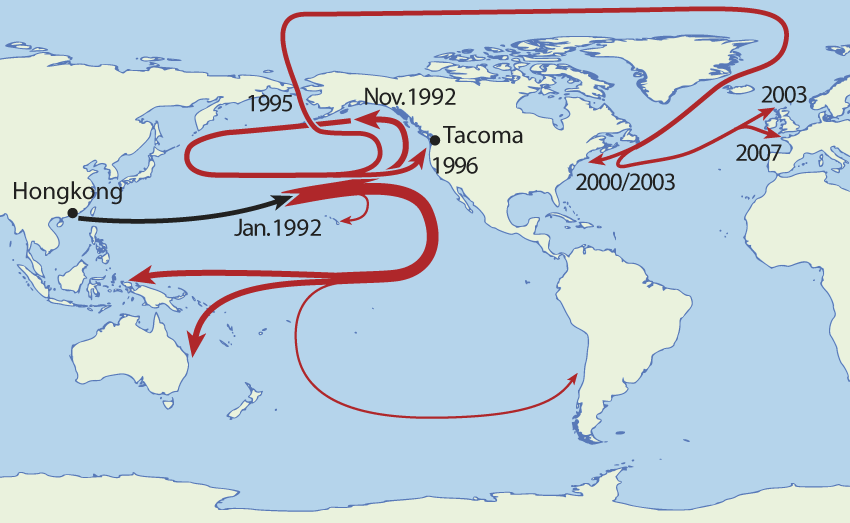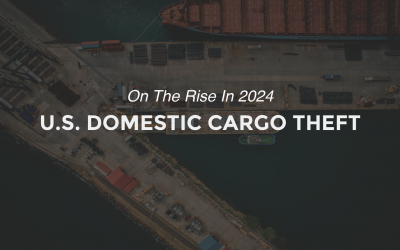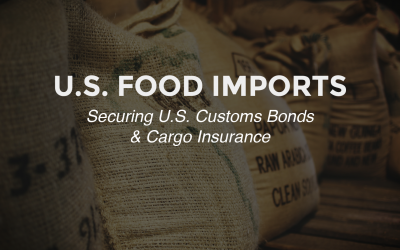Ever wonder what happens to plastic bath toys that end up in the ocean? They travel all across the world.
Since 1992, plastic bath toys made by First Years Inc. have been traveling across the world with the current. These toys, dubbed “Friendly Floatees”, have helped scientists map out the surface currents of the ocean.
The Toys that Saw the World
In January 1992, a shipment of floating duck, beaver, turtle, and frog bath toys was transported across the Pacific Ocean on a container ship, known as the Ever Laurel, from Hong Kong to America. Halfway across the ocean, the Ever Laurel endured a rough storm. Somewhere in the Pacific, 29,000 toys fell off of the ship and were lost forever… or so they thought.
The toys were made of fully sealed plastic, so they continued to float across the Pacific. This accident launched a 20+ year study of ocean currents which deepened our understanding of how objects can travel across the world in currents.
The first “Friendly Floatees” were discovered ten months after the incident on the Alaskan coast. Four hundred were found in one month along the eastern coast of the Gulf of Alaska, which is 1.4% of the floatees initially determined to be lost at sea. Floatees have been found in Hawaii, South America, Australia, and even one in Scotland in 2007.

The Legacy of the “Friendly Floatees”
An oceanographer named Dr. Curtis Ebbesmeyer learned about the toys falling into the Pacific, so he began tracking these “Friendly Floatees”. From his research with the floatees, Ebbesmeyer developed a computer model that predicts and tracks ocean currents’ movement. Ebbesmeyer predicted that the toys would hit the coast of Washington in 1996, and a handful of the toys did make landfall on Washington in 96’.
The Pacific gyre is a circulating current between Japan, Southern Alaska, Kodiak, and the Aleutian Islands. Although scientists knew of its existence before the toys, they had no clue how long a complete circuit would take. Now, thanks to Dr. Ebbesmeyer, scientists know it takes around three years for total circulation around the Pacific gyre.
Ebbesmeyer’s study has also been used to research the island of garbage in the Pacific gyre and predict the effects of climate change on marine environments.
The floatees have become extremely valuable; some people are willing to pay up to $1,000 for a genuine floatee. First Years Inc. even offered a $100 bounty to anybody who recovered a Floatee in New England, Canada, or Iceland. Thousands of the friendly floatees are said to be still circulating the Pacific in the gyre.
Shipping Containers Lost to the Ocean
The actual number of shipping containers lost each year is highly debated. It is estimated there are between 2,500 and 10,000 containers lost to the ocean each year. With no formal reporting or accountability system in place, there is no definitive answer at this time.
If you find yourself in a similar situation that First Years Inc. experienced when they lost their toy shipment, it is important to have a marine cargo insurance policy to ensure that your loss is protected. The only way to truly protect your business from loss or damage is with marine cargo insurance.







![[Webinar] 2023 Q2 International Trade Update](https://traderiskguaranty.com/trgpeak/wp-content/uploads/2023/08/2023.07_Q2-International-Trade-Update_Page_01-400x250.png)